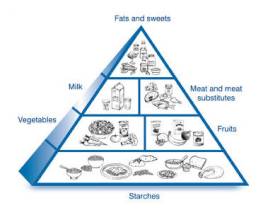Starch fibers could be used to create absorbable bandages
 Food scientists from Pennsylvania State University (Penn State) devised a process that spins starch into fine strands that could be used to create new type of bandages, as well as produce less expensive and more environmentally-friendly toilet paper, napkins and other products. Once the process is scaled to industrial size, companies could use starch fibers to produce bandages and other medical dressings.
Food scientists from Pennsylvania State University (Penn State) devised a process that spins starch into fine strands that could be used to create new type of bandages, as well as produce less expensive and more environmentally-friendly toilet paper, napkins and other products. Once the process is scaled to industrial size, companies could use starch fibers to produce bandages and other medical dressings.
Starch is a polymer made of amylose and amylopectin. Polymers are large molecules that are composed of chains of smaller, repeating molecules. Starches, typically found in corn, potatoes, arrowroot and other plants, are most familiar to consumers as cornstarch, potato starch and tapioca starch. Instead completely dissolving into water, starch becomes a gelatin-like pate known as starch paste.
Graduate student Lingyan Kong and Greg Ziegler, professor of food science at Penn State, came up with an idea to add a solvent to help the solution dissolve the starch without destroying its molecular structure. After adding the solvent, they used an electrospinning device to stretch the starch solution into fibers. The device uses a high voltage electrical charge to create a charge repulsion to overcome surface tension, which stretches the droplets of starch into long strands. These fibers can be combined and formed into paper-like mats similar to napkins, tissues and other types of paper products.
During experiments on starch fibers, the researchers successfully used an extended range of amylose concentrations from 25 to 100 percent. Kong noted that because starch is so abundant, it is less expensive than other materials currently used to form fibers. Cellulose, typically derived from trees, is one of the most common sources of polymers. Petroleum-based polymers are also used as raw materials. However, both cellulose and petroleum-based materials continue to increase in price, as well as present environmental challenges.
Once the technique is adjusted to scale the process for industrial uses, it could be used to produce bandages produced out of starch. Aside the fact it would lower the costs due to abundance of starch, the starch bandages would degrade into glucose.
Since glucose can be safely absorbed by human body, it would eliminate the need for usually painful bandage removal. Although starches are at the bottom of the diabetes food pyramid, I wonder would wearing these bandages influence people with this disease.










Leave your response!